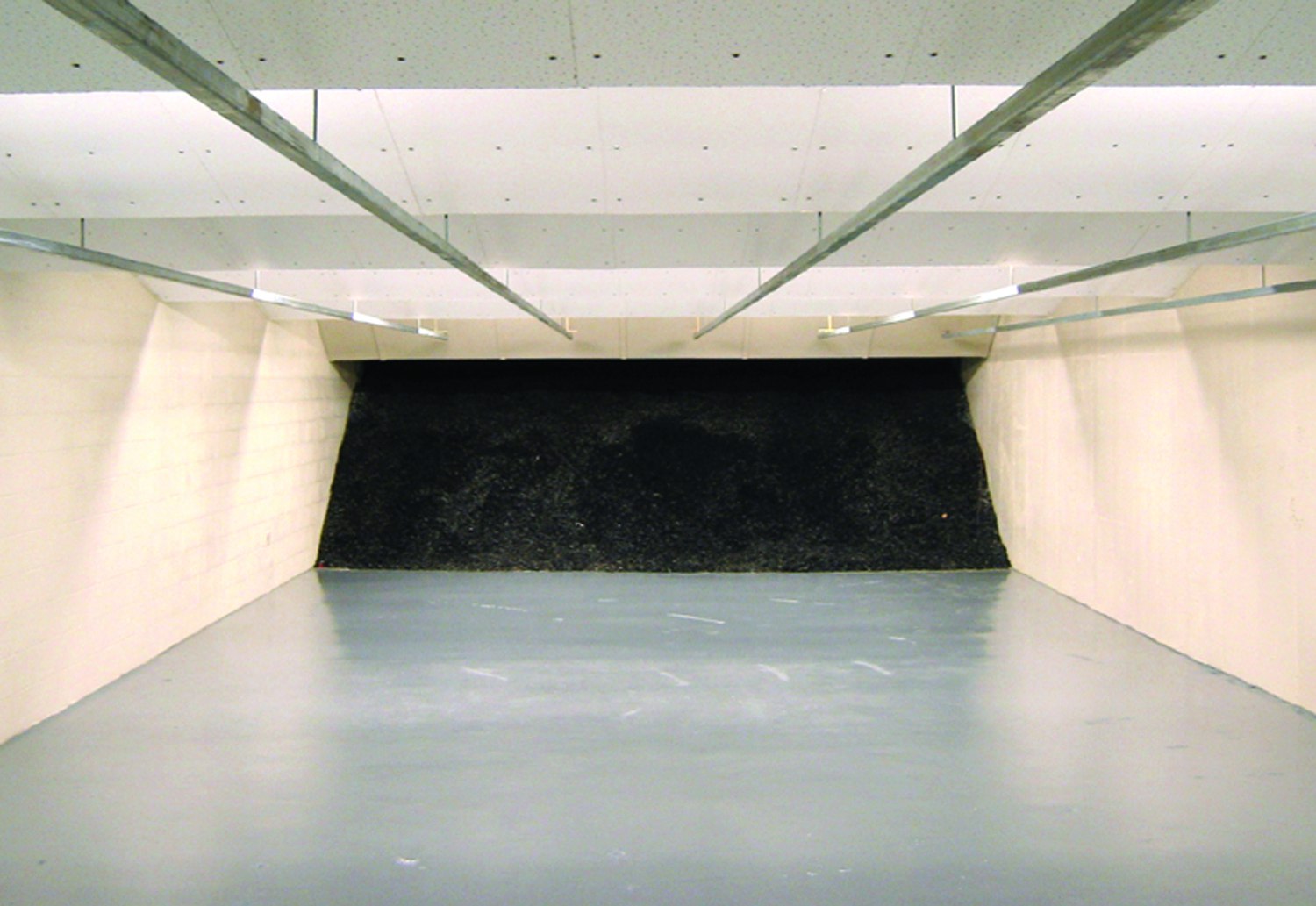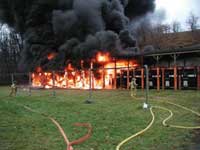 At its most basic level, a rubber berm trap is approximately two feet of chopped rubber laid on top of an angled support structure to create a backstop or “berm” to catch bullets fired into it. There are several different approaches to this fundamental idea, but the same basic principles apply to them all. When you shoot into a dirt berm, the friction of passing through the dirt is what ultimately stops the bullet. A rubber berm trap works exactly the same way, with the obvious difference being the use of chopped rubber instead of dirt or sand.
At its most basic level, a rubber berm trap is approximately two feet of chopped rubber laid on top of an angled support structure to create a backstop or “berm” to catch bullets fired into it. There are several different approaches to this fundamental idea, but the same basic principles apply to them all. When you shoot into a dirt berm, the friction of passing through the dirt is what ultimately stops the bullet. A rubber berm trap works exactly the same way, with the obvious difference being the use of chopped rubber instead of dirt or sand.
 Because the rubber is a softer collection medium, ricochet and lead dust can be significantly reduced in some applications. Cross-range firing is safer, as is firing at extremely close distances. Such benefits make this trap an excellent choice for certain indoor ranges and other low-volume ranges where lead dust is a concern.
Because the rubber is a softer collection medium, ricochet and lead dust can be significantly reduced in some applications. Cross-range firing is safer, as is firing at extremely close distances. Such benefits make this trap an excellent choice for certain indoor ranges and other low-volume ranges where lead dust is a concern.
Rubber berms aren’t perfect in every circumstance, however, no matter what you may read. In our experience, we’ve encountered several myths about what rubber berm traps and their accompanying accessories are capable of doing. Before you make any decisions on your range, make sure you know the facts.
CLAIM #1: Action Target disapproves of rubber traps because all they make are steel traps.
Not only does Action Target approve of rubber traps for certain shooting range applications, we have been manufacturing our own for more than a decade and have patents covering our unique berm trap technology. The hassle-free design of Action Target’s rubber berm trap takes advantage of the practical and beneficial properties of rubber, while eliminating the weaknesses and unnecessary elements of other designs.
We recognize steel traps and rubber traps have very different benefits and limitations. It is important for the range operator to understand these issues clearly before choosing one technology over the other.
CLAIM #2: Rubber berm traps capture all bullets whole and eliminate splatter and ricochet.
Chopped rubber is obviously softer than steel, so some bullets can indeed be captured whole. However, that is not the whole story. After multiple rounds have been fired into the same concentrated area of the trap, newly fired bullets can begin impacting other bullets previously suspended in the rubber. As one bullet impacts another, both can begin to break into small pieces. These “hot spots” of concentrated lead can form behind turning targets, indoor range target retrievers, and other fixed-position targets on your range and can pose a significant ricochet hazard if not managed properly.
When cleaning rubber berm traps, it is not unusual to find masses of small bullet fragments that are nearly indistinguishable from bullet fragments taken from a steel bullet trap. Just because you are shooting into a soft substance does not mean the bullets won’t fracture and break up. There is still the chance for the bullet to strike another bullet, and that chance increases with every day of range use.
Because rubber berm traps have no hard surfaces or obstacles to interfere with cross-lane shooting, they can be particularly effective in tactical applications where shooters move from one position to another and engage targets that are not directly in front of them. As long as hot spots are effectively managed, a rubber berm trap can also be a good choice for very close range shooting.
CLAIM #3: Rubber berm traps are specially treated so they will not catch fire.

There are many documented cases of rubber bullet traps catching fire. Most manufacturers, including Action Target, treat their rubber with some kind of fire-retardant substance to reduce the risk of fire, but without taking additional precautions, it is still possible to have a serious problem.
You may see a demonstration where a piece of fire-treated rubber is held to a direct flame without burning, or you might read reports about tracer rounds being fired into rubber berm traps without igniting the rubber. These are unrealistic scenarios. A full size trap on an actual shooting range can collect large quantities of unspent gunpowder and flammable debris from paper and cardboard targets. Also, bullets fired into the trap can break open chunks of treated rubber exposing the untreated surfaces inside. These issues alone may pose a considerable risk of fire, but the risk can increase dramatically if tracers or other incendiary rounds are fired into the trap – a practice that Action Target strongly discourages.
A recent attempt to decrease the potential fire hazard of rubber berm traps involves mixing the chunks of chopped rubber with hydrated gel beads. The theory is that as bullets are absorbed into the rubber, they will be cooled by the gel to reduce heat build-up. Because no long term data seems to exist to support this theory, it is unclear whether the gel can keep a fire from starting or keep the fire from spreading after it has already started. It is also unclear what difficulty such a gel may cause when it comes time to clean the trap and separate the lead from the rubber.
Rely on the Experts for Help
There are hundreds of things to take into consideration when building a shooting range, but your top priority should always be safety. Before anything else, make sure your range is going to be safe for your customers, your employees, and the environment. If you are considering building a range, talk to the Action Target representative in your region and he will be happy to help you find the right equipment to fit your needs and budget. You can also use our Request a Quote form to get started on your range upgrades today.
Please note: the information included in this article has come from both documented studies and the personal experience of Action Target shooting range specialists. This information has been found to be helpful for many clients throughout the years but may not apply in all situations. Please use judgment in determining which tips will be helpful in your particular situation.